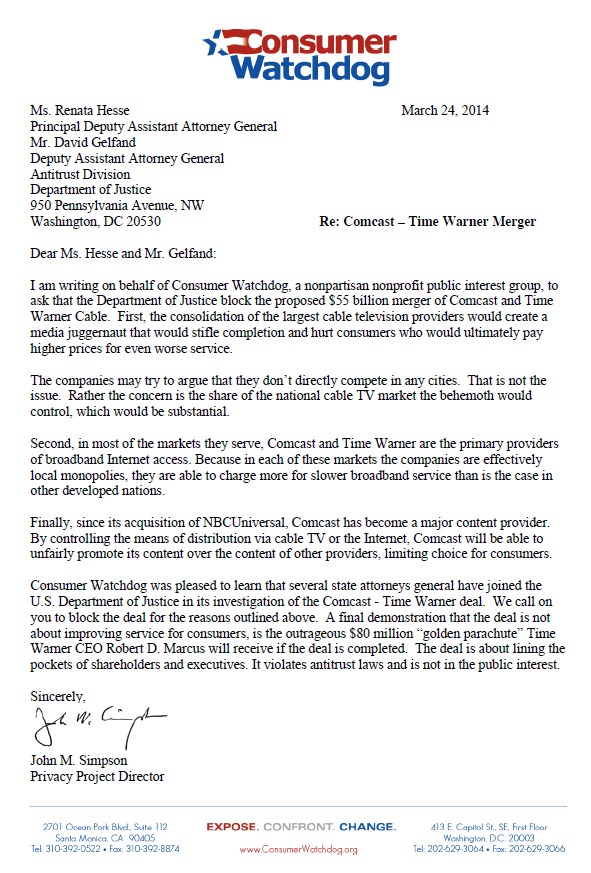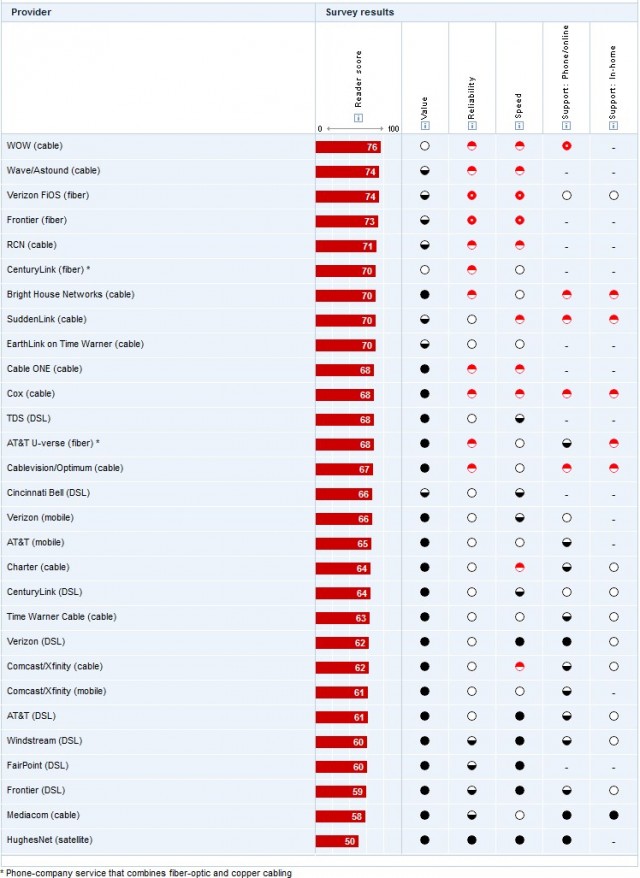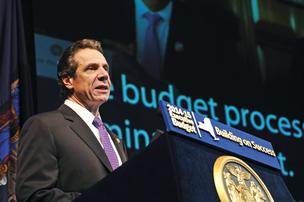
Comcast’s gateway
Some customers are angry and frustrated to learn Comcast has stopped “officially” allowing the use of customer-owned cable modems for its 105Mbps “Extreme” service, insisting subscribers rent a company-supplied gateway for $8 a month.
“Only Comcast issued equipment ensures that the specifications are always met and are not altered intentionally or unintentionally,” reads a technical bulletin issued by the cable company issued Feb. 26.
The new policy was discovered by a Comcast customer in Virginia having trouble with his broadband service. He was using his customer-owned Zoom 5341J — equipment on Comcast’s approved modem list.
“[A Comcast executive customer service representative] insisted that list is incorrect and I must rent a modem from them to receive the correct speeds on [the] Extreme 105 package,” writes ExoticFish on the Broadband Reports’ Comcast forum.
The bulletin, identified as ID TLK1043 and intended for the use of Comcast employees, explains:
Document ID TLK1043; Published February 26, 2014
Overview
Extreme 105 is the latest Comcast DOCSIS 3.0 XFINITY speed product, which provides extreme and unbelievable Internet speeds for customers. The product provides:
- 105Mbps download speed
- 20Mbps upload speed
Affected Areas
National.
Some of the Talking Points are not applicable for the Central Division.
 Impact to Comcast
Impact to Comcast
The Premium Installation fee for Extreme 105 is $249. Extreme 105 is installed by 105Mbps trained technicians. The Comcast Technician will:
- Conduct an in-depth analysis of the customer network.
- Ensure that the customer’s home and equipment are prepared to support the speeds included in the Extreme 105 service.
- Perform a node health check on the day of installation and also on a daily basis after installation.
Impact to Customer
Extreme 105 targets:
- Hard-core gamers
- Users with several computers in their house
- Users who upload and share multimedia files
Media Inquiries
Any media inquiries should be directed to the local market media team.
Q&A
Some of the Frequently Asked Questions and their responses are as below:
Why do I need to use Comcast issued equipment?
Only certified Comcast equipment delivers the ensured service speed attached to the customer’s account.
Comcast allows customers to use their own equipment for all your other Internet packages, why not Extreme 105?
Generally customers can use their own equipment and configure it as they see fit. But for Extreme 105, the configuration must be done and maintained at certain specifications. Only Comcast issued equipment ensures that the specifications are always met and are not altered intentionally or unintentionally.
But I have a DOCSIS 3.0 Modem and N Router, why do I need your versions?
Comcast installs equipment which have gone through extensive network certification process of Comcast and which have been proven in both laboratory and live network tests. This ensures that the equipment performs consistently and delivers the subscribed speed and services.
Does the $249 installation fee include installation of a wireless router?
Yes, the installation fee includes the installation of Comcast owned wireless router.
Why is there a premium installation fee for Extreme 105?
Extreme 105 is a premier Internet product by Comcast and the premium installation fee guarantees a speed of 105Mbps. A Comcast Certified Installation Technician performs additional tests which are not performed during installation of other premier internet service.
Is the premium installation fee refundable if I disconnect the service in 30, 60, 90 days?
The installation fee is non-refundable.
With Comcast reportedly preparing to boost speeds for its customers in the near future, those signed up for Comcast’s 50Mbps “Blast” tier could soon see speed upgrades to 105Mbps. That might expose those customers to the same mandatory rental charge.
The Virginia customer never realized Comcast changed its policies until he had service problems. It was then that a senior representative insisted the customer switch to Comcast’s rented gateway device if he wanted his service fixed. Other customers still using customer-owned equipment and subscribed to 105Mbps service may continue to fly under the radar for some time and there does not seem to be any national effort to contact customers about their equipment.
Some speculate Comcast’s new policy might also relate to the company’s intention to expand its Wi-Fi network relying on Comcast customers with gateway devices to serve as hotspots. That would likely require the use of Comcast’s own gateway to be successful.
Updated: 3/26/14 — 12:17pm ET — Karl Bode at Broadband Reports got an answer back to his inquiry about this issue and a Comcast rep tells him the service tech handing out the above-referenced memo is not correct:
The painful spelling and grammar errors in the last bit of the supposed company memo seemed a little off, so I reached out to Comcast for comment. The long and short of it is: no, this is not official company policy.
“We’re going to have someone try to reach out to the forum poster to follow up, but the short of it is there is no policy change,” Comcast spokesman Charlie Douglas tells me. “Customers can buy or rent modems. Here is our approved devices list.”
Karl adds: “I’m still trying to ferret out why exactly this install technician was trying to push strange and unofficial company policy, and how and why he was using an incorrect and grammatically mangled memo to justify the behavior.”



 Subscribe
Subscribe Despite claims of improved customer service and better broadband, Comcast and Time Warner Cable’s customer satisfaction scores are in near-free fall in the latest Consumer Reports National Research Center’s survey of consumers about their experiences with television and Internet services.
Despite claims of improved customer service and better broadband, Comcast and Time Warner Cable’s customer satisfaction scores are in near-free fall in the latest Consumer Reports National Research Center’s survey of consumers about their experiences with television and Internet services.


 Impact to Comcast
Impact to Comcast
 Since the federal government deregulated the cable industry in the 1990s, state and local officials have had little oversight over cable service and pricing, but in many states regulators still have a voice in mergers and other business deals.
Since the federal government deregulated the cable industry in the 1990s, state and local officials have had little oversight over cable service and pricing, but in many states regulators still have a voice in mergers and other business deals. So far, Comcast does not seem concerned about Cuomo’s proposal.
So far, Comcast does not seem concerned about Cuomo’s proposal. Normally when one learns they are losing a job after only a few months in management, it is a time for sober reflection and emotional recovery.
Normally when one learns they are losing a job after only a few months in management, it is a time for sober reflection and emotional recovery. In the all-encompassing merger proposal submitted to the Securities and Exchange Commission, Time Warner Cable noted it sought the advice of several Wall Street investment banks and related institutions. Unsurprisingly, based on the material submitted voluntarily by Time Warner Cable and Comcast, the banks submitted written reports declaring that the merger proposal seemed fair. For that, these advisers were well-compensated. In all, Time Warner Cable and Comcast will pay a combined $135.5 million in fees in return for the positive assessment of the merger’s potential:
In the all-encompassing merger proposal submitted to the Securities and Exchange Commission, Time Warner Cable noted it sought the advice of several Wall Street investment banks and related institutions. Unsurprisingly, based on the material submitted voluntarily by Time Warner Cable and Comcast, the banks submitted written reports declaring that the merger proposal seemed fair. For that, these advisers were well-compensated. In all, Time Warner Cable and Comcast will pay a combined $135.5 million in fees in return for the positive assessment of the merger’s potential: